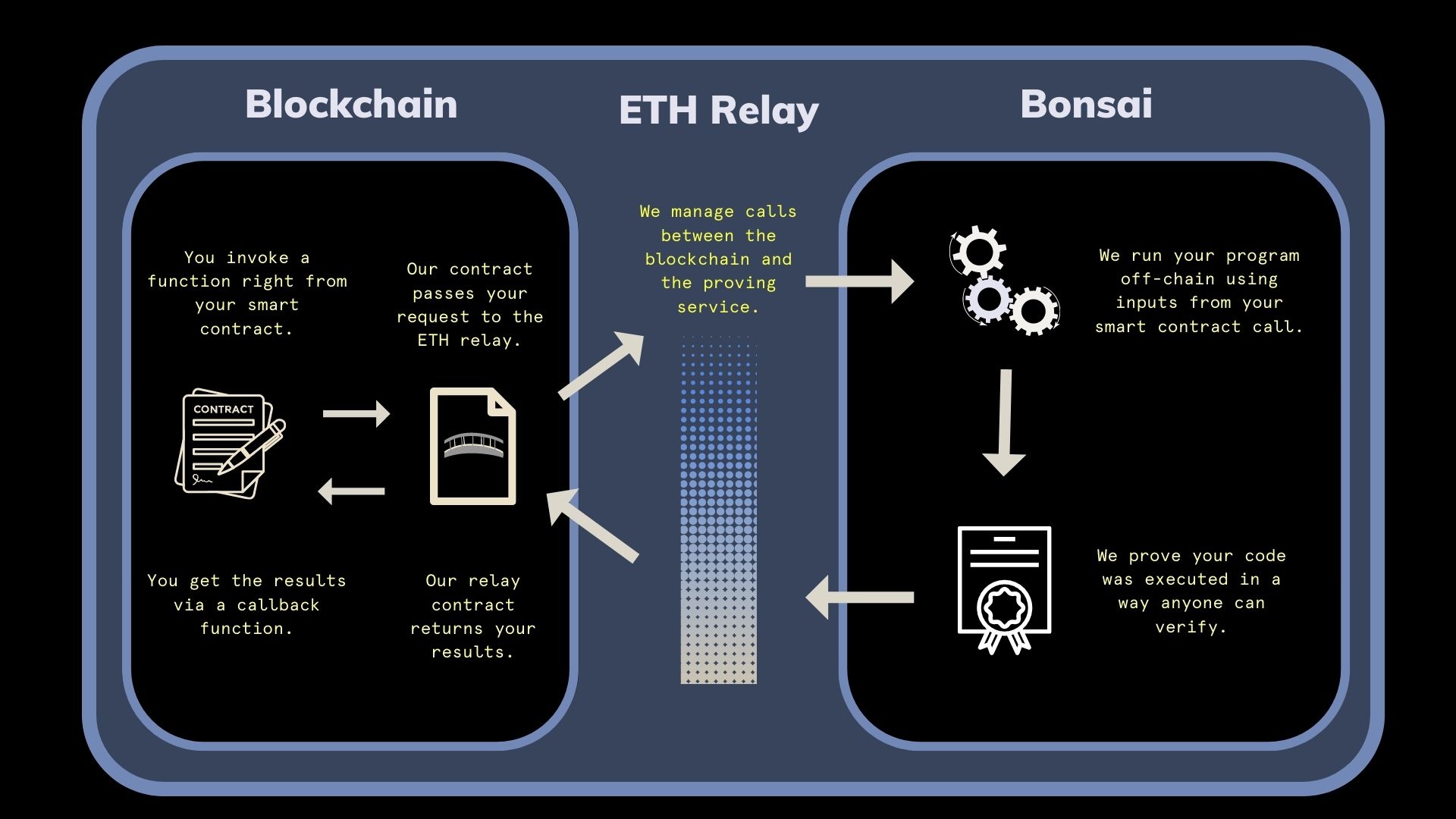A Blockchain Developer's Guide to the zkVM
(To start building on Bonsai, check out the Bonsai Quick Start page.)
In order to prove code using Bonsai, you need to write the code you want proven. That is, you'll need to write a guest program for the zkVM. This guide will focus on the core techniques a blockchain developer will need to write zkVM code to prove in Bonsai. We have a number of guides for developing for the zkVM more generally if you want to dive deeper!
The role of the zkVM in Bonsai

The zkVM is used as an internal component of Bonsai. It is what runs your program off-chain using inputs from your smart contract call, and it is what proves your code was executed in a way anyone can verify. Bonsai runs most of the zkVM for you: all you need to provide is the code you want proven, which we call the zkVM guest program.
Writing Rust code
Guest programs are written in Rust. If you're new to Rust, we recommend their official learning resources.
When creating your guest program, you can write Rust code in the usual way, including importing packages others have written. We do provide some additional zkVM-specific functionality, most notably env::read_slice for reading the input data sent from your smart contract and env::commit_slice for committing public results to the journal (see below).
This is, in principle, everything you need to know to use the zkVM with Bonsai: write Rust code that does whatever it is you want proven, and use the env functions to read inputs from, and commit results to, your smart contract. But if you continue reading we'll provide further orientation to the role of the zkVM and some useful tips and tricks for writing zkVM code.
Retrieving and handling zkVM receipts
Once Bonsai proves your code, it will give you access to this proof with a receipt. Much like a paper receipt, the zkVM receipt can be handed to someone else to demonstrate that a program was executed with integrity. The receipt also contains any computational results we've chosen to share in its journal, so we know our results came from the faithfully executed program.
I/O between the EVM blockchain and the zkVM
The zkVM doesn't natively speak EVM bytecode, so you'll want to decode and encode your smart contract inputs and outputs inside of your provable zkVM guest program. This will allow you to store off-chain program inputs in regular Rust variables and use them during computation. Because your shared outputs will be encoded back into EVM bytecode, you'll be able to read results back into app contracts.
Because the zkVM supports general-purpose instructions, you can use standard Rust libraries including ethabi, a Rust library for decoding and encoding EVM bytecode.
Why am I seeing errors?
We have an FAQ that discusses some frequently encountered problems. You can also ask us questions on Discord.
Diving deeper
We have extensive resources on writing zkVM code. Many of these resources assume you are developing without the aid of Bonsai. Here are some differences you might encounter when reading these docs:
- zkVM docs frequently refer to the guest and host. With Bonsai, you only write code for the guest; Bonsai itself runs the host. A partial exception is providing inputs and receiving the receipt, which is handled by the host without Bonsai, whereas with the Bonsai ETH Relay your smart contract must handle these duties.
- You might see our zkVM documentation refer to executors, sessions, and segments. These code-level concepts are related to continuations, a feature that lets us design our zkVM program proof work to be parallelizable and not limited by the size of the program to be proven. Bonsai takes advantage of this feature to parallelize proofs about off-chain computation. If you're reading about these in zkVM documentation, you're almost certainly looking at host-side details that you don't need in order to write provable code.